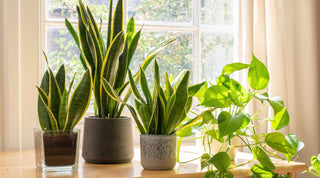Whether you're a gardening novice or a seasoned green thumb, this guide to composting promises to elevate your compost game.
Welcome to the world of composting, where your kitchen scraps and yard waste transform into black gold for your garden! Inspired by Dr. Elaine Ingham, a soil biology pioneer, this guide dives into her revolutionary composting methods. Dr. Ingham's approach emphasizes creating a balanced, microbial-rich compost to enhance soil health and plant growth.

Understanding the Science Behind Composting
Composting is more than just piling up organic matter. At its core, it's a symphony of microbial activity, where bacteria, fungi, protozoa, and nematodes break down organic material into humus. Dr. Ingham's method focuses on fostering a rich microbial ecosystem. This process recycles nutrients, suppresses plant diseases, improves soil structure, and increases water retention. By understanding this microbial life, you can create compost that's not just a soil amendment but a vital component of your garden's ecosystem.
Setting Up Your Compost Pile
To start, find a suitable location for your compost pile or bin - somewhere convenient but away from direct sunlight. Dr. Ingham emphasizes the importance of a balanced carbon-to-nitrogen ratio (C:N) in compost. Aim for a mix of green materials like vegetable scraps (high in nitrogen) and brown materials like dried leaves or straw (high in carbon). The ideal C:N ratio is about 30:1. Layer these materials, starting with browns at the bottom, greens in the middle, and browns again on top. This layering technique helps maintain the right moisture and air balance essential for microbial activity.
Maintaining the Compost Pile
Maintaining your compost pile is essential for transforming your organic waste into nutrient-rich compost. Regular maintenance ensures the pile decomposes efficiently while remaining odor-free and pest-resistant. The key is to monitor and manage your compost's moisture, temperature, and aeration. It should be moist but not overly wet, resembling the consistency of a wrung-out sponge. Aeration is crucial; turning the pile every couple of weeks introduces necessary oxygen and speeds up the decomposition process. Watch the temperature of your pile, too. An ideal compost pile heats up to about 130-150°F, indicating active microbial activity and helping kill weed seeds or pathogens.
Tools Needed for Maintaining a Compost Pile:
- Compost Bin or Pile Enclosure: To keep your compost contained and organized.
- Pitchfork or Compost Turner: For turning and aerating the compost pile.
- Watering Can or Hose: To maintain the right moisture level.
- Thermometer: To monitor the temperature of your compost pile.
- Gloves: To protect your hands during handling.
- Cover (optional): To retain moisture and heat, especially in drier or cooler climates.
- Compost Aerator Tool (optional): Specially designed to mix and aerate the compost more efficiently.
- Wheelbarrow: For transporting compost materials to and from the pile.
- Garden Rake: Useful for spreading and gathering materials.
- Compost Sieve or Screen (optional): For refining finished compost.
These tools make the composting process easier and more efficient and ensure that you're creating the best environment for compost to thrive. With these tools at your disposal, maintaining your compost pile becomes a straightforward and rewarding part of your gardening routine.
Harvesting and Using Your Compost
After 3-6 months, your compost should be ready. It'll look and feel like rich, dark soil and have an earthy smell. Dr. Ingham suggests a simple test to ensure compost maturity: place a handful in a zip-lock bag and sniff it after a day. If it smells sour or unpleasant, it needs more time. Mature compost can be used throughout your garden. Spread it as a top dressing on garden beds, mix it into potting soil, or use it as mulch. This nutrient-rich compost will support plant growth, enhance soil structure, and improve water retention.
Conclusion
Embracing Dr. Elaine Ingham's composting methods contributes to a healthier garden and plays a role in environmental sustainability. By composting, you're reducing landfill waste and creating a natural, nutrient-rich supplement for your plants. This guide offers a glimpse into the profound impact of microbial life in composting, echoing Dr. Ingham's emphasis on understanding and harnessing these microscopic allies. Happy composting, and remember, every scoop of compost you spread is a step towards a more fertile and sustainable garden!



